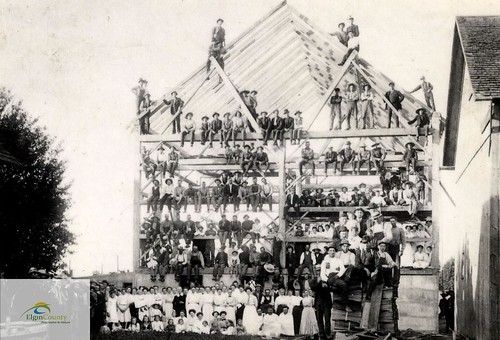Building things is difficult. Building things with others – even more so. Nowhere is this more pronounced than in a conference presentation. Assembled in a poorly lit room with mean, uncomfortable chairs, professionals assemble, ostensibly to learn, grow, and take new ideas back to their home bases.
Ask those assembled to begin by turning to those around them and sharing their names, titles, and locations of origin, and you’re on the right track. You’ll get no argument when you ask for a few volunteers to share out what’s wrong, broken, or difficult about the systems in which they work.
In education, we like very much to do what my friend Kristin Hokanson once described as “admiring the problem.” If allowed to roam free, it’s likely an entire conference session could be dedicated to admiring the problem. If conference sessions don’t fit your context, imagine a faculty lounge at lunch break, faculty meeting, learning community meeting, etc. Any place professionals are meeting, it’s likely they can fill every cranny of a space with admiration of the problem.
Ask them to take a moment to consider a possible solution to that problem, though, and the mood will change. Perhaps more to the point, the mood will stay the same and the solution will be sentenced to death by “yeah, buts.”
No matter the research, evidence, data, and testimonials behind a solution, the “yeah, buts” will tumble out of mouths in an avalanche of negativity.
We are no longer simply admiring the problem, we’ve fallen in love with it.
In the schools we need, we must take a stance of “yes, and…”
“Yes, and…” is the fundamental principle of improvisational theater. Where no lines, no script, no direction are driving a scene actors must trust that their scene partners will accept what they say and do and immediately build off of it.
Imagine the power of such a mindset when someone presents an assembled audience with a teaching practice that has opened up learning for her students. Instead of, “Yeah, but that would never work for our kids because…” the answer becomes, “Yes, and here are the ways we’d need to tweak what you’re talking about for it to fit our scenario.”
Do not misunderstand, “Yes, and…” does not avoid conflict. Instead, it embraces conflict and builds from the difficulties rather than seeing the problem as the conclusion.
Another way to think about this is in the shape of the “barn raising” approach described by Don McCormick and Michael Kahn. Pointing out the stonewalling that can often take place in a college seminar discussion where all voices are attempting to be heard by means of either ignoring or tearing down those ideas that come before them, McCormick and Kahn suggest another approach.
They make four suggestions:
- The classroom battle is not a good way to teach thinking.
- Even if it were, it makes idea-conversation so unpleasant that students do their best to avoid it, in college and afterwards.
- It is a significant contribution to the building of a society of contention and enmity.
- And, as an alternative, there is another way to talk about ideas which obviates those difficulties.
McCormick and Kahn utilize the metaphor of a barn raising in which all parties are working to build something new and useful to the group. While each may have a different skill or task to complete, they are working toward a common cause of creation rather than destruction or limitation of the others. To be successful, all must be succcessful.
Both “Yes, and…” and barn raising take reality as their foundations. Both acknowledge the present situation or problem as the starting point for any work to be done. They find their usefulness in refusing to stand around and take into account all the factors that make finding a solution so difficult. “This is the reality,” these approaches say, “and now we will work together to build a new and better reality.”






